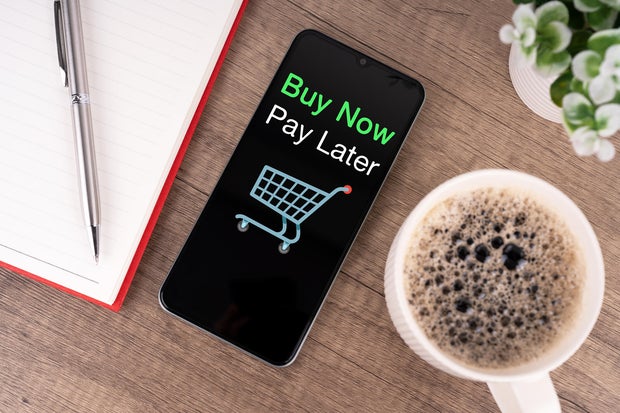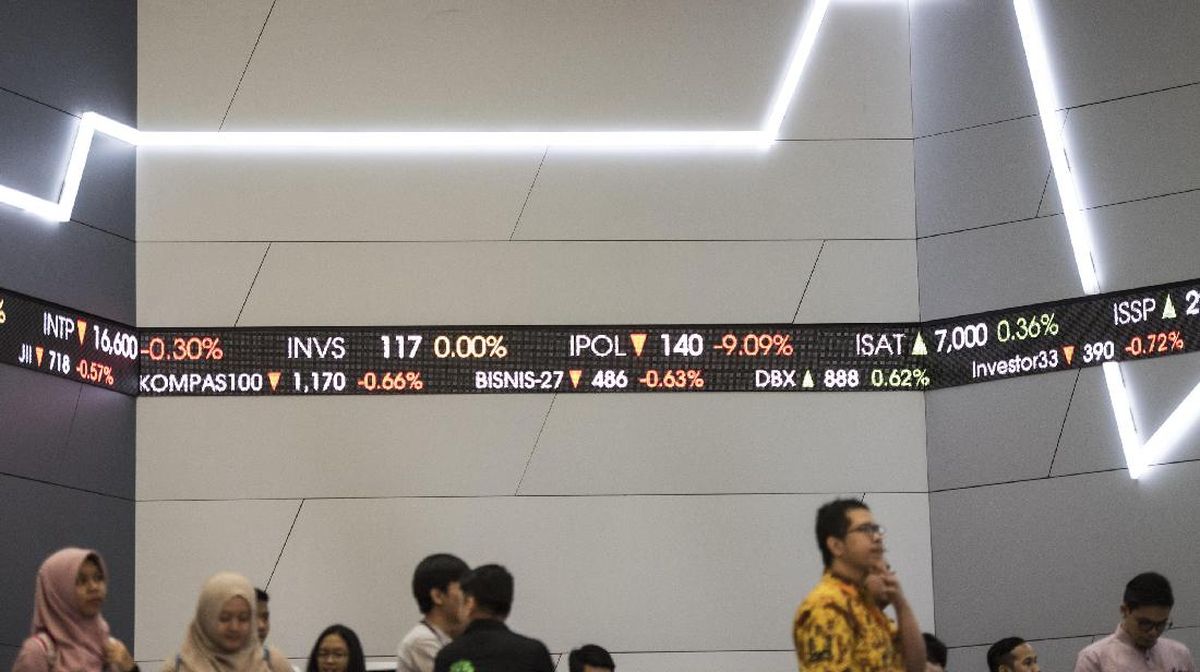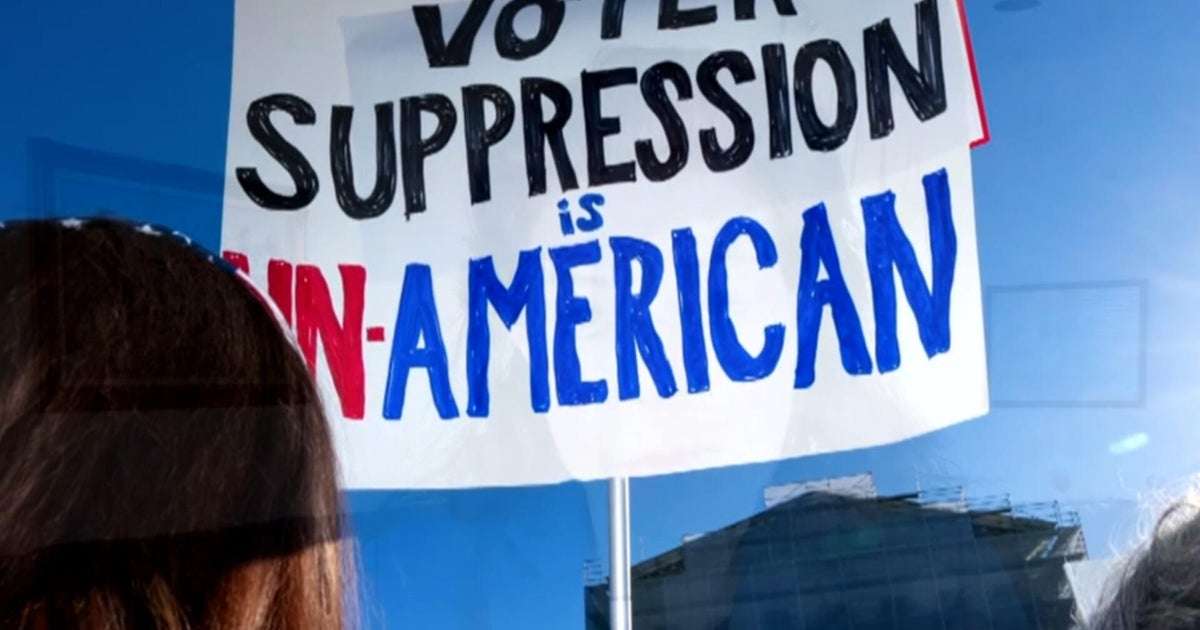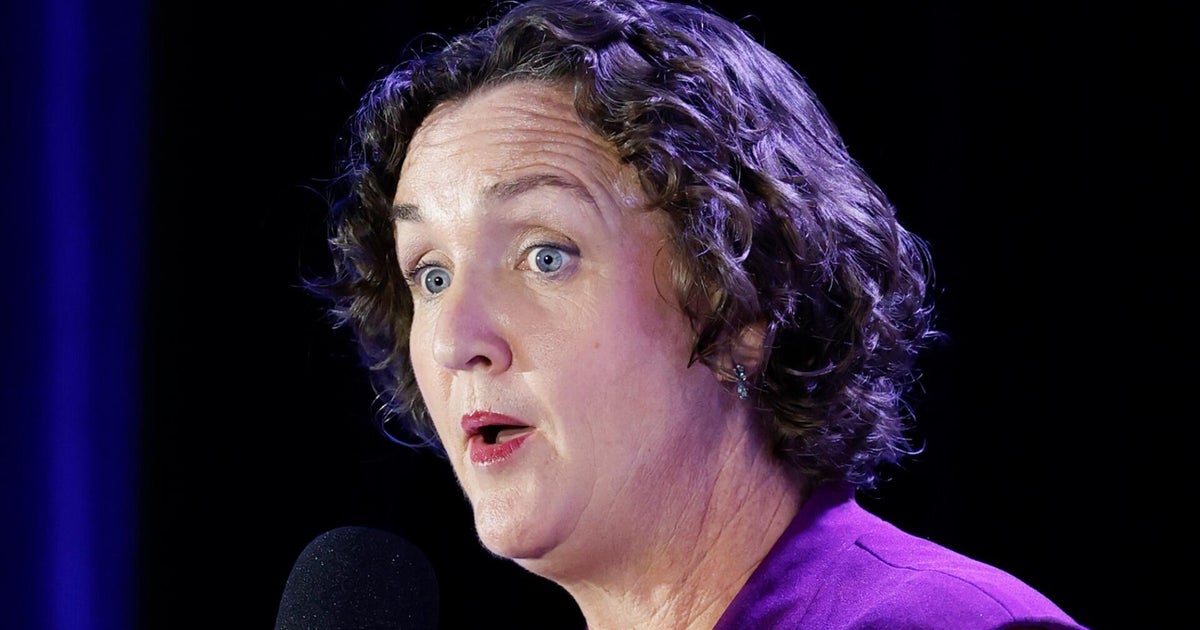 A buy now, pay later plan can seem like a smart financing option, but it comes with some major downsides.
Getty Images
A buy now, pay later plan can seem like a smart financing option, but it comes with some major downsides.
Getty Images
Despite inflation showing signs of cooling overall over the past year, the inflation rate has been ticking back up over the last few months. As a result, the cost of everyday essentials remains steep for many Americans. Against this backdrop, millions have turned to buy now, pay later (BNPL) services, such as Afterpay, Klarna and Affirm, to finance purchases both in-store and online.
Buy now, pay later plans work by splitting a purchase into smaller installments, usually with no interest charges for on-time payments. For cash-strapped shoppers, this option can seem like a smart way to budget. But financial experts warn that BNPL carries hidden risks that could derail your money management.
Why are they raising concerns about these services, though, and what should you know before using them? Below, experts explain how these installment plans can hurt your financial health and what to watch out for.
Find out how to start tackling your high-rate debt problems today.
How buy now, pay later can wreck your budget, experts say
"BNPL makes consumers feel they can buy things they normally wouldn't and spend more than they typically would," says Linda Ta Yonemoto, a certified financial educator and founder of financial resource center Good For You Money. "It builds unsustainable spending habits." Unlike traditional credit, BNPL reduces the immediate pain of payment by splitting costs into more manageable chunks."
"Purchases may feel cheaper, but using more than one BNPL service amplifies the risk. Since many companies still don't share spending information with competitors, overextending across several providers becomes dangerously easy," Yonemoto says.
Yonemoto points to one client who accumulated high four-figure BNPL debt, starting with a $230 dress for a wedding before spiraling into luxury skincare, entertainment and dining expenses.
"[She] also carries debt from credit cards and student loans," Yonemoto says. "It's a multi-layered debt burden that will take years to dig out from."
Hidden costs multiply quickly once you fall behind. Christopher L. Stroup, a certified financial planner and president of Silicon Beach Financial, recalls a tech founder who used BNPL for small business and personal purchases until bills stacked into thousands per month.
"Cash flow couldn't keep up, forcing them to dip into emergency savings and delay tax payments," Stroup says. "This ultimately cost them more in penalties than the BNPL purchases themselves."
Learn how the right debt relief expert could help you now.
Pros and cons of using buy now, pay later payment plans
BNPL companies can offer appealing benefits to consumers, but each comes with downsides that can disrupt your finances.
Pros
- Interest-free payments: BNPL offers "no interest if on time, which is cheaper than many credit cards when paid as agreed," says Stroup.
- Quick and accessible: "Gen Z or millennials with limited or less-than-perfect credit history" can easily qualify, Yonemoto points out.
- Short-term cash flow relief: "[You get] more time to pay off a larger purchase, without accruing interest," says Gwyneth Borden, founder and CEO of debt recovery company Remynt.
Cons
- Impulse overspending: Experts warn that the low upfront cost makes it tempting to buy things you can't afford (and may regret later).
- Stacked payments: "It can be easy to take out loans with [various] providers, and risk overextending yourself," Borden emphasizes. Meanwhile, varying due dates can strain your finances.
- Credit damage risk: "Recent changes with FICO mean debt and late payments on BNPL borrowing can impact your credit score moving forward," Yonemoto says.
Common buy now, pay later mistakes people make
Buy now, pay later plans can seem straightforward, but can also be detrimental when used carelessly. For example, these mistakes can lead to big consequences, especially over time:
- Using it for basic needs: Relying on BNPL for groceries, gas and bills signals that your budget is already stretched too thin, Stroup warns. This creates a dangerous debt cycle where you need to borrow just to survive.
- Not knowing the repayment period(s): "Payment windows can be as short as two weeks, and others can scale over a year," Borden explains. "So, it's essential to place the payment schedule on your calendar to avoid [missing] due dates."
- Repaying BNPL debt with a credit card: This creates what Yonemoto calls a "debt domino effect," which puts you deeper into debt.
Smart alternatives to BNPL financing
Instead of reaching for BNPL, Yonemoto advises living within your means and making intentional spending decisions.
"Try thrifting, finding it for free, borrowing from [loved ones] or using what you already have first," she says.
For larger items, Yonemoto recommends starting a sinking fund to save up money in advance instead of financing the item. This gives you time to think twice about the purchase and not take on debt.
Finally, whenever you feel the urge to buy something, apply a 24- to 48-hour waiting rule. This cooling-off period helps you separate genuine needs from impulse wants.
The bottom line
While BNPL promises convenience, it's designed to encourage spending rather than help you manage money responsibly. If you're struggling to keep up with payments, stop taking on new BNPL plans.
"[Don't] assume interest-free means risk-free," Stroup stresses. And when possible, stick to purchases you can pay for in cash — your budget will thank you later.
Sharon Wu, a senior writer with over a decade of experience, specializes in consumer-focused content covering home and finance topics such as insurance, investments, credit, debt, mortgages and home security.


















































